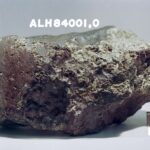It is on top of a volcanic lava formation solidified thousands of years ago in Iceland. They appear to be several huge giants set up. But it is the machine that converts CO2 into rock. The project was developed by the Swiss company Climework. It is the first of its kind in operation today. The plant is known as Orca. It currently removes 4,000 tons of CO2 per year. This is equivalent to the emissions of 900 gasoline cars.

porous rocks
They are a large number of fans organized on top of each other. They take air from the environment and capture the CO2 it contains through filters. Climeworks representative Bryndis Nielsen explains the project.
“We need to clean up all the mess we’ve been leaving behind since the industrial revolution began,” he says. “But we are not here to replace emissions reductions.” This technology alone is not enough to address the risks of climate change. Global CO2 emissions reached 37.4 gigatonnes (37 billion tons) in 2023.
That’s why the company’s next project, called Mammoth, is almost ten times larger than Orca. Iceland has intense volcanic activity. It is the great reason for Climeworks to set up its plants on this island. Not only does it provide clean geothermal energy, without greenhouse gas emissions. Volcanic activity means that the subsoils of Iceland are composed mainly of basalts. They are porous volcanic rocks that are the perfect container for CO2 from the atmosphere.
The gas that the modular fans collect from the environment is mixed with water. It is sent through tubes to a kind of dome that protrudes from the surface. Here it is injected under pressure 2km underground where it reacts with the basalts and calcifies the CO2 for millions of years.

New goal
“Orca is here to prove a point,” explains Climeworks representative Bryndis Nielsen. “And a plant like this is commercially viable.”
But in addition to the difficulties that, by its very nature, this new technology faces, it also entails risks. Like the countries with the highest emissions using Iceland as their emissions dump instead of reducing them.
The machine that converts CO2 into rock is a hope. The new Climeworks plant, Mammoth, is expected to extract about 36,000 tons of CO2 from the environment per year.





